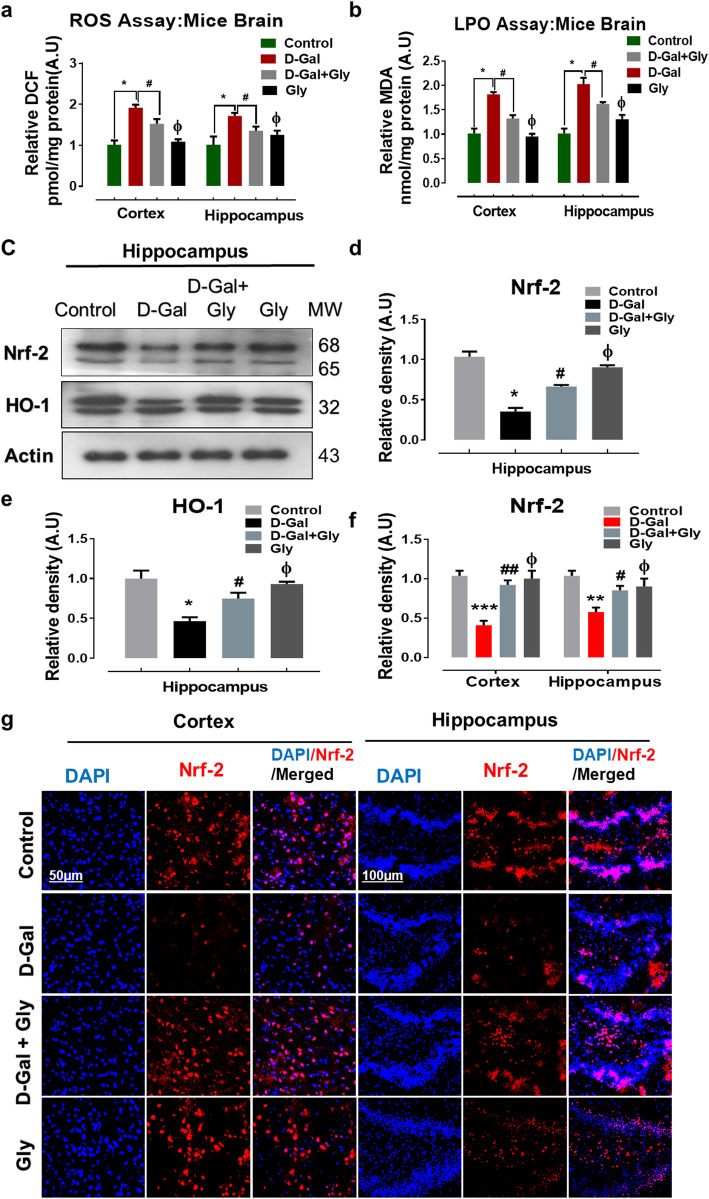Fig. 2.
Glycine treatment inhibited d-galactose-induced oxidative stress and ameliorates ROS/LPO production in mice brain. a, b Representative histograms of reactive oxygen species (ROS measured as DCF level) and lipid peroxidation (LPO measured as MDA level) assays of Gly against d-galactose in the cortex and hippocampus of mice brain. c–e Western blot analysis representing the expression level of Nrf2 and HO1 proteins in the hippocampus of the experimental groups. The cropped bands were quantified using ImageJ software, and the differences are represented in the histogram. The density values are expressed in arbitrary units (A.U.) as the mean ± SEM for the respective indicated protein. An anti-β-actin antibody was used as a loading control. n = 8 mice/group, and the number of experiments performed N = 3. g The immunofluorescence images represented the immunoreactivity of Nrf2 proteins (Red, TRITC; Blue, DAPI) in the cortex and hippocampus regions of mice brain along with their relative histograms, respectively. The relative integrated density values are represented in arbitrary units (A.U) as the means (± S.E.M) for the respective indicated proteins. DAPI (blue) was used for nucleus staining. n = 8 mice/group, and the number of experiments = 3. Magnification × 40. Scale bar; 50 μm = cortices; DG hippocampal regions =100 μm. Asterisk (*) sign indicated significant difference from the normal saline treated group; hash (#) sign indicated significant difference from d-gal-treated group; while the phi (Φ) sign indicated no significance from normal saline-treated control group. Significance: *P ≤ 0.05, **P ≤ 0.01; ***P ≤ 0.001; #P ≤ 0.05, ##P ≤ 0.01

